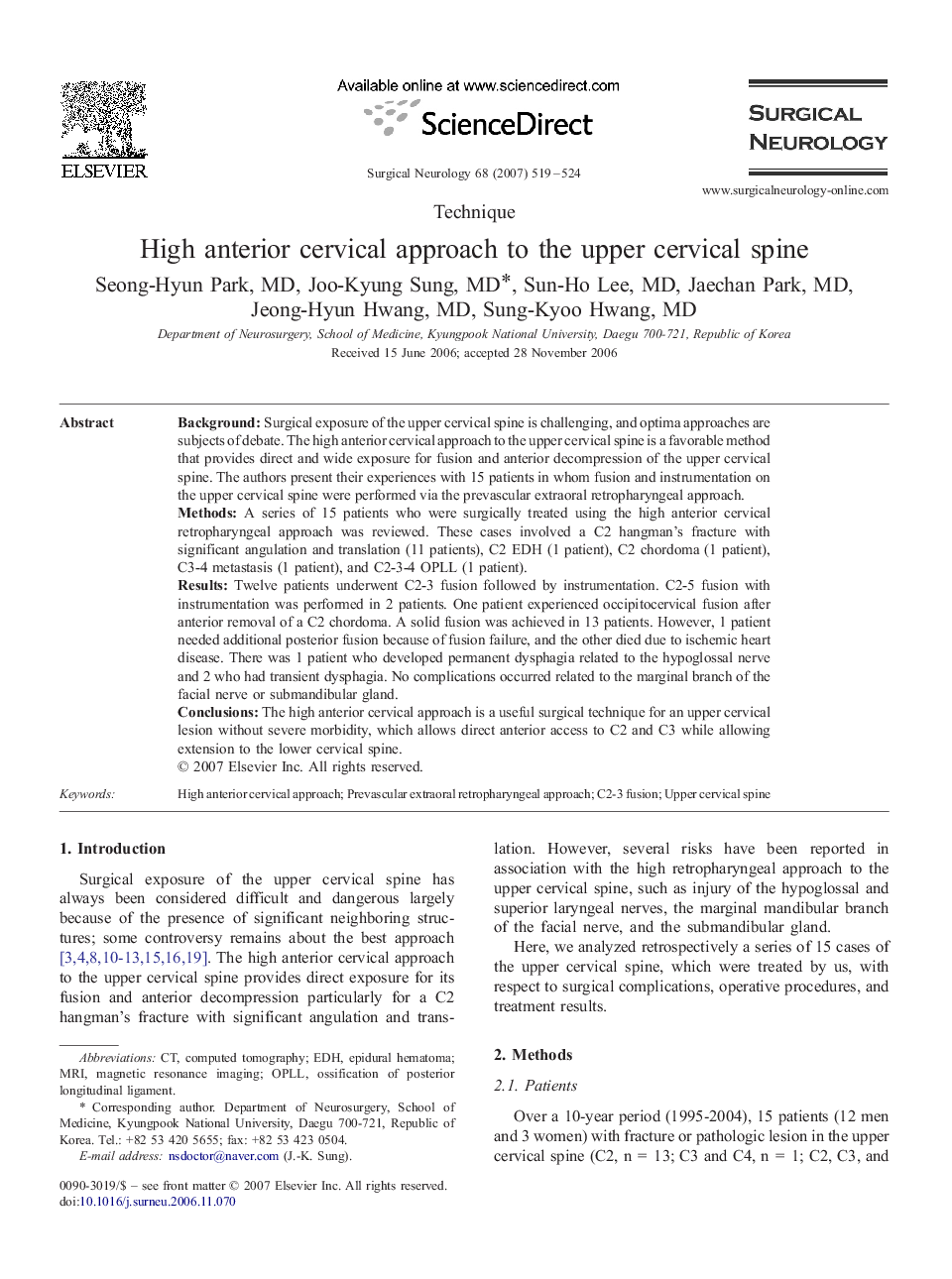| Article ID | Journal | Published Year | Pages | File Type |
|---|---|---|---|---|
| 3093359 | Surgical Neurology | 2007 | 6 Pages |
BackgroundSurgical exposure of the upper cervical spine is challenging, and optima approaches are subjects of debate. The high anterior cervical approach to the upper cervical spine is a favorable method that provides direct and wide exposure for fusion and anterior decompression of the upper cervical spine. The authors present their experiences with 15 patients in whom fusion and instrumentation on the upper cervical spine were performed via the prevascular extraoral retropharyngeal approach.MethodsA series of 15 patients who were surgically treated using the high anterior cervical retropharyngeal approach was reviewed. These cases involved a C2 hangman's fracture with significant angulation and translation (11 patients), C2 EDH (1 patient), C2 chordoma (1 patient), C3-4 metastasis (1 patient), and C2-3-4 OPLL (1 patient).ResultsTwelve patients underwent C2-3 fusion followed by instrumentation. C2-5 fusion with instrumentation was performed in 2 patients. One patient experienced occipitocervical fusion after anterior removal of a C2 chordoma. A solid fusion was achieved in 13 patients. However, 1 patient needed additional posterior fusion because of fusion failure, and the other died due to ischemic heart disease. There was 1 patient who developed permanent dysphagia related to the hypoglossal nerve and 2 who had transient dysphagia. No complications occurred related to the marginal branch of the facial nerve or submandibular gland.ConclusionsThe high anterior cervical approach is a useful surgical technique for an upper cervical lesion without severe morbidity, which allows direct anterior access to C2 and C3 while allowing extension to the lower cervical spine.
